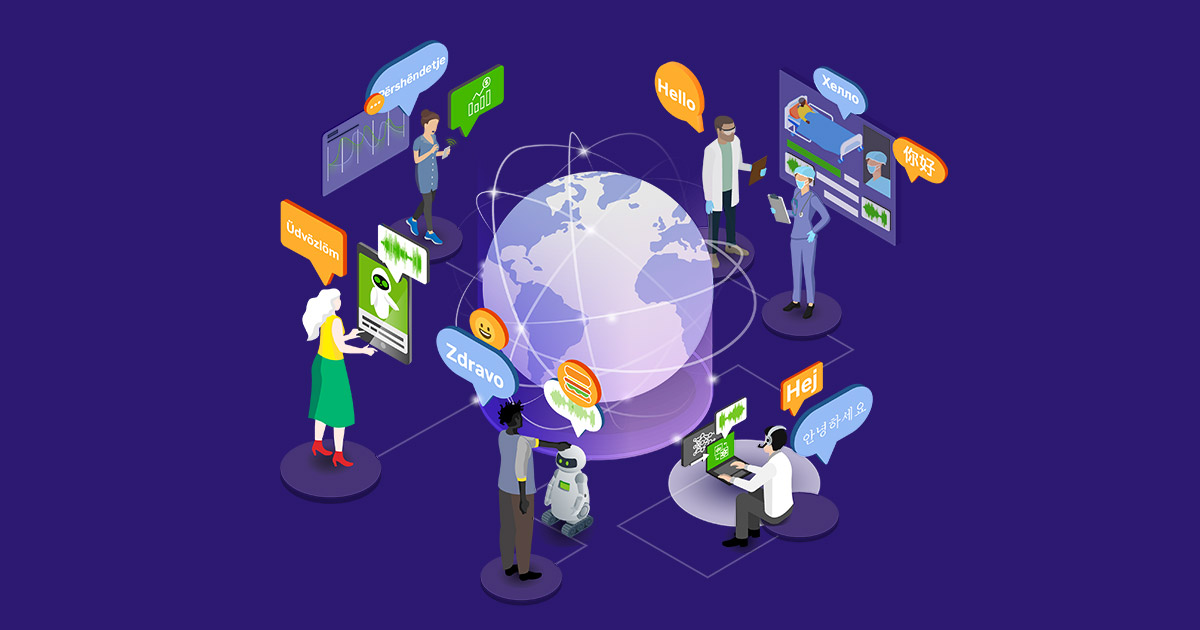Blog
Speech AI Day | NVIDIA

Understanding Speech AI
In recent years, speech artificial intelligence (AI) has become a game-changer in various industries. From enhancing customer service interactions to powering voice-activated devices, the advancements in speech AI technology are reshaping how we communicate and interact with machines. This blog post will explore the significance of Speech AI, its applications, and the innovative technology driving its development.
What is Speech AI?
Speech AI refers to the technology that enables computers to recognize, understand, and respond to human language naturally. This encompasses a range of functions, including:
- Speech Recognition: The ability to convert spoken language into text.
- Natural Language Processing (NLP): Understanding the meaning behind spoken or written words.
- Speech Synthesis: Generating human-like speech from text.
These capabilities allow devices to interpret and respond to user commands actively, creating a more seamless interaction experience.
The Growth of Speech AI Technology
The rapid advancement of speech AI can be attributed to several factors, such as:
- Improved Algorithms: Enhanced machine learning models are enabling more accurate voice recognition.
- Increased Computing Power: The rise of cloud computing provides the necessary infrastructure for processing large amounts of speech data.
- Access to Large Datasets: The availability of extensive voice datasets allows AI models to learn diverse accents and dialects.
This confluence of factors has led to the widespread adoption of speech AI across various sectors.
Key Applications of Speech AI
1. Customer Support
Businesses are increasingly integrating speech AI into their customer support systems. Automated voice assistants can handle routine inquiries, guide customers through troubleshooting processes, and even escalate complex issues to human representatives. This not only enhances efficiency but also improves customer satisfaction by providing quick resolutions.
2. Healthcare
Speech AI is revolutionizing the healthcare industry by streamlining documentation processes for medical professionals. Voice recognition software lets physicians dictate notes, rather than typing them out, saving valuable time. Additionally, patients can use speech AI for appointment scheduling and medication reminders, improving overall management of healthcare services.
3. Smart Home Devices
The proliferation of smart home technology relies heavily on speech AI. Devices like smart speakers and home assistants utilize voice recognition to execute commands, control smart devices, and provide real-time information. The convenience and accessibility offered by these innovations contribute to a growing trend towards home automation.
4. Education
Educational platforms are harnessing the power of speech AI to improve learning experiences. Language learning apps use speech recognition to help users practice pronunciation, while virtual tutors can offer personalized assistance through natural dialogue. This adaptive learning ensures that students receive tailored educational experiences.
Challenges in Speech AI
Despite its remarkable progress, speech AI still faces several challenges that need addressing to ensure its continued growth.
1. Recognition Accuracy
While voice recognition technology has improved significantly, background noise and varied accents can still hinder its accuracy. Ensuring reliable performance across diverse environments is crucial for widespread adoption.
2. Data Privacy
The use of voice data raises concerns about privacy and security. Companies must prioritize the protection of user data and comply with relevant regulations to build trust with consumers.
3. Ethical Considerations
As speech AI systems become more sophisticated, ethical questions arise regarding their use. Issues such as bias in AI decision-making and the potential for misuse underscore the necessity for responsible development and deployment of these technologies.
The Future of Speech AI
The future of speech AI looks promising. With continuous advancements in machine learning and an ever-increasing volume of accessible data, speech AI will likely become more nuanced and capable. Some potential future developments include:
- Enhanced Multilingual Capabilities: As global communication continues to expand, speech AI will improve in recognizing and translating multiple languages seamlessly.
- Emotion Recognition: Future systems could be equipped to gauge a speaker’s emotional state, allowing for more empathetic responses during interactions.
- Deeper Context Understanding: Advanced NLP could enable speech AI to comprehend context in conversations more effectively, leading to more relevant and tailored interactions.
How Businesses Can Leverage Speech AI
Businesses looking to take advantage of speech AI should consider the following strategies:
1. Assess Current Needs
Identify areas where speech AI can enhance operations. Whether in customer service, internal communication, or productivity tools, understanding specific needs will guide implementation.
2. Invest in Quality Technology
Choosing the right software and hardware solutions is critical for maximizing the benefits of speech AI. Look for platforms with a proven track record in accuracy and usability.
3. Train Employees
Ensure employees are well-versed in utilizing speech AI tools effectively. Training sessions can foster a culture of innovation within the organization and help staff adapt to new technologies.
4. Monitor Performance
Regular evaluation of speech AI systems is essential to identify areas for improvement. Analyze user feedback to assess effectiveness and ensure adjustments are made when necessary.
Conclusion
Speech AI is transforming the way we communicate, providing endless possibilities across various industries. As technology continues to evolve, its implications for communication, efficiency, and human interaction will only grow. Embracing this change can lead to significant benefits for both businesses and consumers, making speech AI an area worth investing in for the future. By understanding its capabilities, challenges, and potential, organizations can harness the power of speech AI to enhance their operations and improve outcomes.

